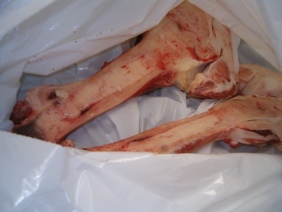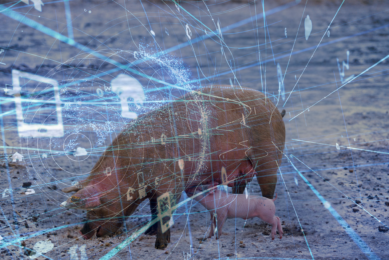Research: Benzoic acid and pig bones strength

Combined Swiss-French research has shown that the presence of benzoic acid in pig feed does not have any lasting negative effects on bones of growing pigs.
Benzoic acid, an additive that reduces ammonia formation in the slurry, is added to many pig feeds nowadays in order to minimise environmental pollution. In addition, the feeds also contain low phosphorus and protein concentrations.
Since both a low phosphorus (P) intake and metabolic acidosis compromise bone mineralisation, the effect of a diet with a low concentration of calcium (Ca), phosphorus and crude protein and the effect of benzoic acid on Ca and P metabolism were examined in an experiment using pigs from 13 to 64 kg body weight.
Compared to the control piglet and grower diets, the intake of the low nutrient piglet and grower diets reduced Ca and P retention by 27% and 24%, respectively, reduced the growth rate of the piglets by 7%, and decreased the bone breaking strength and bone mineral content by 5% in the animals which were slaughtered at 64 kg body weight.
Digestibility
Benzoic acid (5 and 10 g per kg piglet and grower diet, respectively) did not influence the apparent digestibility of Ca, increased the apparent digestibility of P by 5% and increased the urinary Ca and P output by 70% and 83%, respectively, but had no effect on the proportion of ingested Ca and P which was retained.
Benzoic acid (5 and 10 g per kg piglet and grower diet, respectively) did not influence the apparent digestibility of Ca, increased the apparent digestibility of P by 5% and increased the urinary Ca and P output by 70% and 83%, respectively, but had no effect on the proportion of ingested Ca and P which was retained.
Furthermore, benzoic acid increased the serum activity of the bone formation marker alkaline phosphatase at 25 and 40 kg body weight by 17% and 13%, respectively and decreased the concentration of the bone resorption marker serum crosslaps at 25 kg body weight by 12%, implying that benzoic acid affected bone metabolism at 25 and 40 kg body weight.
Blood variables
Since benzoic acid neither affected the blood variables at 60 kg nor the bone breaking strength and bone mineral content, any possible negative effect of benzoic acid on bone metabolism of the piglets and of the young growing animals thus seems to have disappeared during the last period of the grower period.
Since benzoic acid neither affected the blood variables at 60 kg nor the bone breaking strength and bone mineral content, any possible negative effect of benzoic acid on bone metabolism of the piglets and of the young growing animals thus seems to have disappeared during the last period of the grower period.
The research was recently published in the scientific publication Animal Feed Sciency and Technology.
Related article:
• Benzoic acid: The latest knowledge
• Benzoic acid: The latest knowledge
Related website:
• Animal Feed Sciency and Technology
• Animal Feed Sciency and Technology











